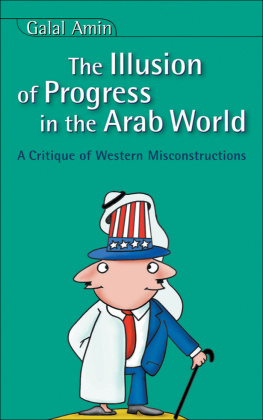Thank you for buying this ebook, published by NYU Press.
Sign up for our e-newsletters to receive information about forthcoming books, special discounts, and more!
Sign Up!
About NYU Press
A publisher of original scholarship since its founding in 1916, New York University Press Produces more than 100 new books each year, with a backlist of 3,000 titles in print. Working across the humanities and social sciences, NYU Press has award-winning lists in sociology, law, cultural and American studies, religion, American history, anthropology, politics, criminology, media and communication, literary studies, and psychology.
1. CAPITALISM IN THE AGE OF GENERALIZED MONOPOLIES
CONTEMPORARY CAPITALISM IS A CAPITALISM of generalized monopolies. By this I mean that monopolies are now no longer islands in a sea of other still relatively autonomous companies, but are constitutive of an integrated system. Therefore, these monopolies now tightly control all the systems of production. Small and medium enterprises, and even the large corporations that are not strictly speaking oligopolies, are locked in a network of control put in place by the monopolies. Their degree of autonomy has shrunk to the point that they are nothing more than subcontractors of the monopolies. This system of generalized monopolies is the product of a new phase of centralization of capital in the countries of the Triadthe United States, Western and Central Europe, and Japanthat took place during the 1980s and 1990s. The generalized monopolies now dominate the world economy. Globalization is the name they have given to the set of demands by which they exert their control over the productive systems of the periphery of global capitalism (the world beyond the partners of the Triad). It is nothing other than a new stage of imperialism.
This capitalism of generalized and globalized monopolies is a system that guarantees these monopolies a monopoly rent levied on the mass of surplus-value (transformed into profits) that capital extracts from the exploitation of labor. To the extent that these monopolies are operating in the peripheries of the global system, monopoly rent is imperialist rent. The process of capital accumulation, which defines capitalism in all its successive historical forms, is therefore driven by the maximization of monopoly/imperialist rent-seeking. This shift in the center of gravity of the accumulation of capital is the source of the continuous concentration of income and wealth to the benefit of the monopolies, largely monopolized by the oligarchies (plutocracies) that govern oligopolistic groups, at the expense of the remuneration of labor and even the remuneration of non-monopolistic capital.
This imbalance in continued growth is, in turn, the source of the financialization of the economic system. By this I mean that a growing portion of the surplus cannot be invested in the expansion and deepening of systems of production, and therefore the financial investment of this excessive surplus becomes the only option for continued accumulation under the control of the monopolies.
The implementation of specific systems by capital permits the financialization to operate in different ways:
1. Subjugation of the management of firms to the principle of shareholder value;
2. Substitution of pension systems funded by personal saving and capitalization (pension funds) for systems of pension distribution paid by current taxation (transfer payments);
3. Adoption of the principle of flexible exchange rates;
4. Abandonment of the principle of central banks determining the interest ratethe price of liquidityand the transfer of this responsibility to the market.
Financialization has transferred the major responsibility for control of the reproduction of the system of accumulation to some thirty giant banks of the Triad. What are euphemistically called markets are nothing other than places where the strategies of these actors who dominate the economic scene are deployed. In turn, this financialization, which is responsible for the growth of inequality in income distribution (and fortunes), generates the growing surplus on which it feeds. The financial investments, or rather the investments in financial speculation, continue to grow at dizzying speeds, not commensurate with growth in GDP (which is therefore becoming largely fictitious) or with investment in real production. Among other things, the explosive growth of financial investment requires, and fuels, debt in all its forms, especially sovereign debt. When the governments in power claim to be pursuing the goal of debt reduction, they are deliberately lying. The strategy of financialized monopolies requires the growth in debt, which they seek rather than combat, as a way to absorb the surplus profit of monopolies. The austerity policies imposed to reduce debt have indeed resulted, as intended, in increasing its volume.
It is this systemcommonly called neoliberal, the system of generalized monopoly capitalism, globalized (imperialist) and financialized (of necessity for its own reproduction)that is imploding before our eyes. This system, apparently unable to overcome its growing internal contradictions, is doomed to continue its wild ride. The crisis of the system is due to its own success. Indeed, so far the strategy deployed by monopolies has always produced the desired results: austerity plans and the so-called social (in fact antisocial) downsizing plans that are still being imposed, in spite of resistance and struggles. To this day the initiative remains in the hands of the monopolies, the markets, and their political servantsthe governments that submit to the demands of the so-called market.
In this analytic perspective of monopoly-capitalisms transformation, it seems necessary to reformulate the theory of surplus (a distinct concept from that of surplus-value) and, by extending its field of action to the global system, to unveil the nature of the monopoly rent/imperialist rent that has come to exert a unilateral dictatorship over the accumulation process on a world scale.
Beyond Surplus-Value: The Concept of Surplus
The surplus at issue is the result of growth in the productivity of social labor exceeding that of the price paid for labor power. Let us assume, for example, that the rate of growth in the productivity of social labor is about 4.5 percent per year, sufficient to double the net product over a period of about fifteen years, corresponding to an assumed average lifetime for capital equipment.
Let us assume that, in the long run, real wages would grow at a rate of about 2.5 percent per year to bring about an increase of 40 percent over a fifteen-year span. At the end of a half-centurys regular and continuous evolution of the system, the surplus (which defines the size of Department III relative to net revenue, itself the sum of wages, reinvested profits, and surplus) takes up two-thirds of the net product, roughly equivalent to GDP. The shift indicated here is approximately what happened during the twentieth century in the developed centers of world capitalism (the United States/Europe/Japan Triad).
Analysis of the components corresponding to the concept of surplus shows the diversity of the regulations governing their administration.
Corresponding approximately to Marxs Departments I and II in the national accounts are the sectors defined respectively as primary (agricultural production and mining), secondary (manufacturing), and a portion of so-called tertiary activities that are hard to derive from statistics that were not designed for that purpose, even when the definition of their status is not itself confusing. To be held to participateindirectlyin the output of Departments I and II are transportation of implements, raw materials, and finished products; trade in those products; and the cost of managing the financial institutions needed to service the two departments. What are not to be regarded as direct or indirect constitutive elements in their output, and therefore counted as elements of surplus, are government administration, public expenditures and transfer payments (for education, health, social security, pensions, and old-age benefits), services (advertising) corresponding to selling costs, and personal services paid for out of income (including housing). Whether the services at issue, lumped together in the national accounts under the title tertiary activities (with the possibility of distinguishing among them a new sector termed quaternary), are administered by public or private entities does not by itself qualify them as belonging to Department III: the surplus. The fact remains that the volume of tertiary activities in the developed countries of the center (as in many of the peripheral countries, though that questiona different onedoes not concern us here) is much larger than that of the primary and secondary sector. Moreover, the sum of taxes and obligatory contributions in those countries by itself amounts to or exceeds 40 percent of their GDP. Talk by some fundamentalist right-wing ideologists calling for reduction of these fiscal extractions is purely demagogic: capitalism can no longer function in any other way. In reality, any possible decrease in the taxes paid by the rich must necessarily be made up by heavier taxation on the poor.
Next page










